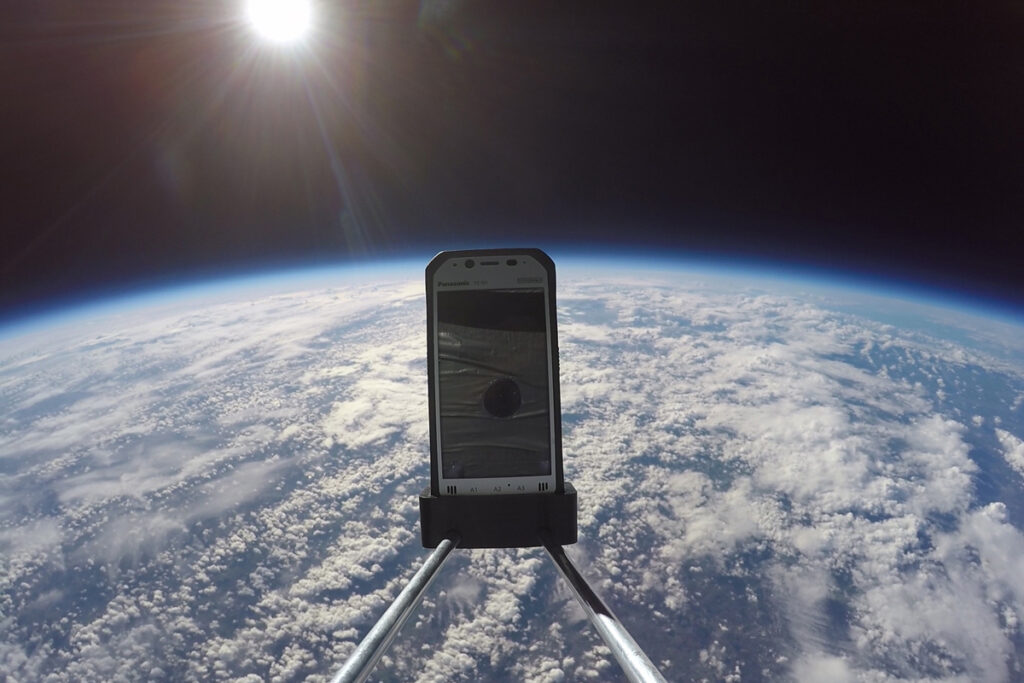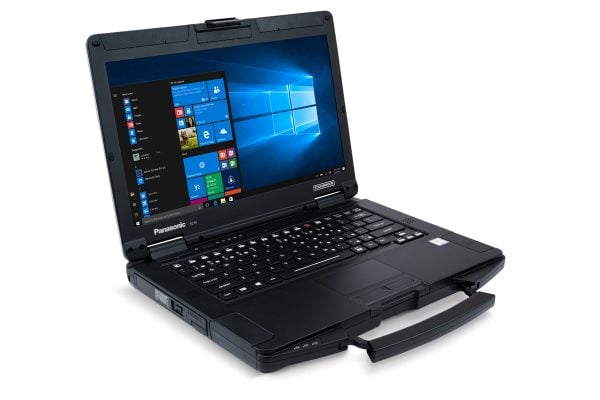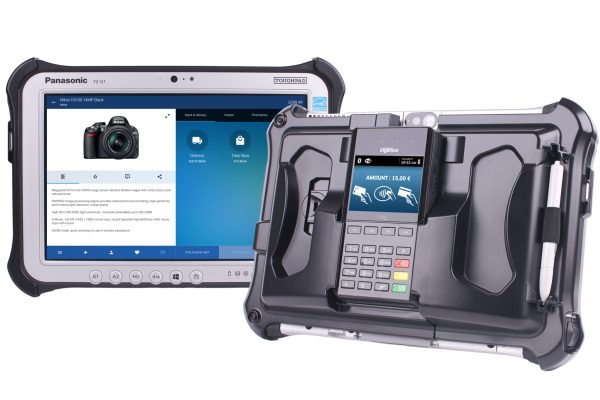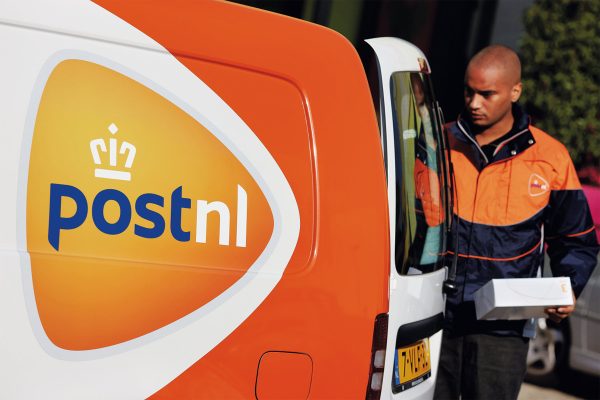Panasonic debuted the first Toughbook to the world 20 years ago and since then everyone has done their utmost to break them doing everything from freezing them, burning them and running them over with just about every type of vehicle available and even blowing them up with explosives.
What’s left to show just how tough a Toughpad is? Jon Tucker, European Product Manager and Rebecca May, Regional Marketing Manager at Panasonic carried out the ultimate out of this world experience by sending a Toughpad FZ-N1 handheld and a FZ-G1 tablet into space.
 Hanging from a meteorological balloon and surrounded by cameras to film the journey, the Toughpad FZ-N1 handheld and FZ-G1 tablet were sent up over 34,000 metres to near space on two separate flights. The devices survived temperatures of -67 Celsius before the balloon exploded and they plunged back to earth at speeds in excess of 250 miles per hour.
Hanging from a meteorological balloon and surrounded by cameras to film the journey, the Toughpad FZ-N1 handheld and FZ-G1 tablet were sent up over 34,000 metres to near space on two separate flights. The devices survived temperatures of -67 Celsius before the balloon exploded and they plunged back to earth at speeds in excess of 250 miles per hour.
It’s worth pointing out that normally when tests like this are carried out that electronic devices are routinely protected in a thermally insulated box with heating to stop batteries freezing, other electronic device haven’t survived an unprotected trip. No such creature comforts for the Toughbook devices which were entirely unprotected and left open to the elements. Whilst the devices were held in clamps for the trip, their journeys were captured by GoPro cameras… the cameras were housed in the insulated box.
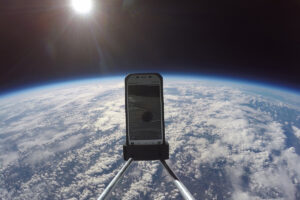 The Panasonic Toughpad devices were launched by Dr Chris Rose and Dr Alex Baker from Sentintospace. The firm specialises in sending and filming objects in near space and prepares the balloon and payload, calculates the flight path, liaises with the Civil Aviation Authority for clearance and then tracks and recovers the payload when it falls back to earth.
The Panasonic Toughpad devices were launched by Dr Chris Rose and Dr Alex Baker from Sentintospace. The firm specialises in sending and filming objects in near space and prepares the balloon and payload, calculates the flight path, liaises with the Civil Aviation Authority for clearance and then tracks and recovers the payload when it falls back to earth.
It’s hard to explain just how impressive this is, Panasonic do supply their devices to some pretty harsh environments, such as for use on the Siberian Tundra where temperatures can plunge to -50, but they have special batteries which at the expense of battery life will function at extreme temperatures. No such special treatment for the devices sent to space though, they had the standard batteries installed.
Having been frozen, exposed to the elements, dropped reaching speeds of 250 miles hour hour, slowed by parachute to crash back to earth and finally impacting at 6 meters per second the devices still worked perfectly.
If you’re looking for tough devices that can stand heat, water, extremes of temperature and being dropped you can be pretty sure a Toughbook fit’s the bill.
